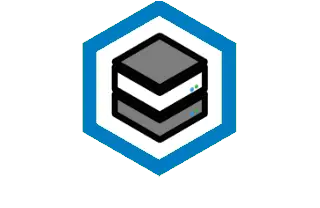How do you know which HDD is in slot X of your server? For example if one fails and you don’t want to unplug the wrong one.
Sadly my 24 Bay one doesn’t come with Smart Caddys or something fancy, only Power and Activity LED. Where on one occasion i guessed wrong -_- .
I’m tempted to start a spreadsheet but i hope their is something better than this or disk descriptions.
The only thing I can think of is to put stickers.
Not in a position to try this right now, but if your server is a Dell and you have the (enterprise, possibly) iDRAC, I think you can make a light on the drive caddy blink so you can identify it.
i label my drives with the serial number. i can then easily remove the failed drive.
If all you have is the serial number of the disk that is failing … you’d better know what slot it’s in before you go pulling disks for replacement.
My server is a tower, so no hotswapping.
I know where my drive is when I see the right serial number on the label. Most of them I put little sticky notes with the identifier and drive number next to the sata ports so it’s easy to find.
I tape a piece of paper with important info to the top of the server… Top outside, not the inside because I don’t want it to block any airflow.
Paper is cheap and doesn’t need batteries, and I don’t need to look for the info when I need it.
If you use a generic case then you’re going to have to gather the info outside.
Some suggestions:
Onenote or similar - use the rectangle tool to sketch up some rectangles of your drive bays and then type/write out the serial numbers and other info. I record manufacture date, when I installed it, where I bought it from, the part number, the serial number and sometimes a comment like “ironwolf pro orange logo sticker.”
If you use a SAS HBA with breakout cables you may be able to identify them by port. Ie HP P822 tells you I:1:0 for internal port 1, breakout cable 0/1, E:2:1 for external port 2, breakout cable 2/1.
Last time I did this, i mapped out which plug corresponded to which device that linux saw then wrote a script that told me which hard drive was plugged into where and put it into a csv file.
This was for my disk testing tower, so when it told me “sdb” had finished badblocks, i would know which hdd sdb was.
All my drives came with a sticker from WD with the serial number on the back of each drive. I am able to open my hot swap bays just enough to the number without disconnecting the drives.
Once my server was up and running I took a snapshot of all of the drives, shut off the server, and rearranged them from top to bottom following the order on the list. So disk 1 is in slot 1 and so on.
I add part of the serial number into the gpt label. Plus printed labels of that part of the serial on the drive bays.
Can you tell if the backplane supports SGPIO? If it and your RAID card do, and things are wired up correctly, you can tell your RAID card to Identify the drive and it’ll blink the LEDs. I just configured a Supermicro chassis to do this with an Adaptec controller.
I’ve started to utilize Netbox for all of that. Haven’t gotten to the drives yet, but all my networking connections, power, IP’s, etc. are documented in it.


